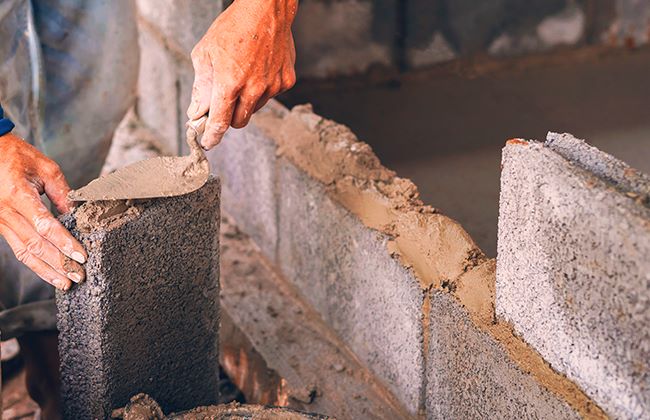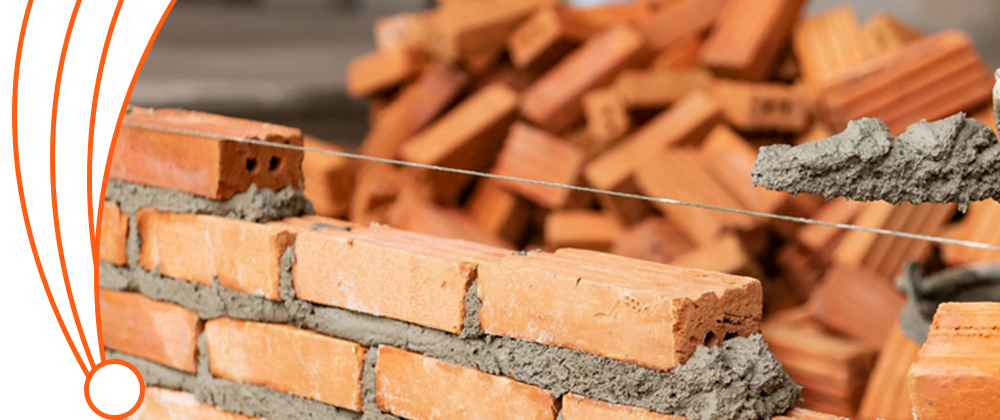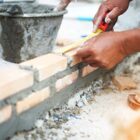Brick masonry construction is an ancient and timeless art, that has been used for centuries to build durable and beautiful structures. From the towering skyscrapers of modern cities to the humble cottages in rural villages, brick masonry has stood the test of time as a reliable building material.
But do you know exactly what is brick masonry? How does it differ from stone masonry construction? And how do you ensure that your mortar joints are strong and long-lasting? In this article, I’ll answer these questions and more, delving into the techniques, tips, and repairs necessary for successful brick masonry construction. So let’s get started!
Table of Contents
What is Brick Masonry Construction?
Brick masonry construction is a technique of building structures using bricks and mortar. It involves arranging and bonding the bricks together to form walls, pillars, arches, or other shapes. The basic principles of brick masonry involve laying courses of bricks in horizontal layers and filling the gaps with mortar.
Types of Pointing in Brick Masonry
Explore the various types of pointing detailed below to understand how each method can enhance the longevity and beauty of brick constructions. From traditional to more intricate techniques, each type offers unique benefits suited for different environmental conditions and architectural styles
1. Flush Pointing:
This type fills up the vertical joints and flushes them with a horizontal joint to create a smooth finish. It helps to protect bricks from water damage while giving them an aesthetic look.
2. Raked (or Struck) Pointing:
Raked pointing is when you cut away some of the mortar so that only half remains standing. It provides better resistance against moisture because it exposes less surface area than flush pointing does.
3. Weathered Pointing:
Weathered pointing slopes down slightly towards the weather side to allow rainwater to run off easily without penetrating the wall structure. It’s commonly used on buildings exposed to severe weather conditions like coastal areas.
4. Tuckpointing:
Tuckpointing consists of using two different colors and sizes of mortar nearby, creating an illusion that thin lines have been added between each layer. The technique adds depth and texture while disguising any imperfections in your brickwork.
Each type has unique advantages depending on climate conditions and personal preferences.
Stone Masonry Construction vs. Brick Masonry Construction
When it comes to building construction, there are two popular types of masonry: stone and brick. Stone masonry construction is the process of using natural stone materials, while brick masonry construction involves using clay bricks.
Ultimately, choosing between stone or brick masonry depends on factors such as budget, desired aesthetic appeal, and maintenance requirements. Both options offer unique benefits that should be carefully considered before making a decision.
Mortar for Pointing Work: Choosing the Right Mix
When it comes to brick masonry construction, the mortar used for pointing work is just as important as the bricks themselves. But choosing the right mix of mortar can be tricky.
- One factor to consider is the type of project you are working on. Different projects may require different types of mortars, such as hydraulic lime or Portland cement-based mixes.
- Another consideration is color matching. If you’re repairing or repointing existing brickwork, you’ll want to choose a mortar mix that closely matches the original color and texture of the surrounding bricks.
- It’s also important to pay attention to proportions when mixing your mortar – too little water can make it difficult to work with, while too much water can weaken its strength over time.
Methods of Pointing: Techniques and Best Practices
The method used for pointing can have a significant impact on the overall integrity and appearance of a wall. Here are some techniques and best practices to keep in mind:
- Firstly, it’s important to choose the right type of mortar mix for your project.
- Secondly, before beginning any work on point, make sure that all loose debris and dirt are removed from the area.
When applying new mortar, use a trowel to carefully fill in any gaps It’s also important to match the color and texture of existing mortar as closely as possible.
After allowing time for curing (typically 24-48 hours), you can finish by smoothing out any rough edges with a jointing tool or similar instrument.
Repairing Mortar Joints in Brick: Maintenance and Restoration
It’s essential to repair mortar joints in brick as part of regular maintenance and restoration.
The first step is to assess the damage and determine if the joint needs repointing or just repairing. Once you’ve determined whether you need to repoint or repair, you’ll want to choose a suitable mortar mix for your project.
Any new material must match the existing mortar as closely as possible both in composition and appearance.
Brick Masonry Construction: Tips for Success
When it comes to brick masonry construction, success often hinges on proper planning and execution. Here are some tips that can help ensure your project is a success.
- Always start with a solid foundation. The base must be even and level for the structure to remain stable over time.
- Next, pay attention to weather conditions during construction. Extreme heat or cold can affect the curing process of the mortar and compromise the integrity of the structure.
- Another key factor is proper drainage. Water should never pool around or seep into walls as this can lead to damage like cracking or crumbling.
- Additionally, taking care when handling bricks during installation is crucial. Avoid throwing them onto one another.
Consider hiring an experienced professional if you’re unsure about any aspect of your project. A qualified contractor will have both the knowledge and tools necessary for ensuring that your work meets all relevant building codes and standards while being aesthetically pleasing at the same time.
Conclusion
To sum up, brick masonry construction is a complex and fascinating building technique that requires skill, patience, and attention to detail. Whether you are working on new construction or repairing existing structures, understanding the various types of pointing methods and mortar mixes is crucial for achieving a successful outcome.
FAQs
Q: What Is Brick Masonry Construction?
A: Brick masonry construction involves building with bricks and mortar, arranging them to form structures like walls and arches.
Q: How Does Brick Masonry Construction Differ from Stone Masonry Construction?
A: Brick masonry uses uniform shaped bricks for easier construction, while stone masonry uses irregular stones, requiring more skill.
Q: What Are the Key Types of Pointing in Brick Masonry Construction?
A: Key types include flush, raked, weathered, and tuck pointing, each offering different aesthetic and functional benefits.
Q: How Should I Choose the Right Mortar for Brick Masonry Construction?
A: Choose mortar based on environmental conditions, structural needs, and desired appearance, focusing on type and color compatibility.
Q: What Are Some Tips for Successful Brick Masonry Construction?
A: Start with a solid foundation, select appropriate bricks and mortar, maintain clean brick storage, and ensure proper joint filling.




